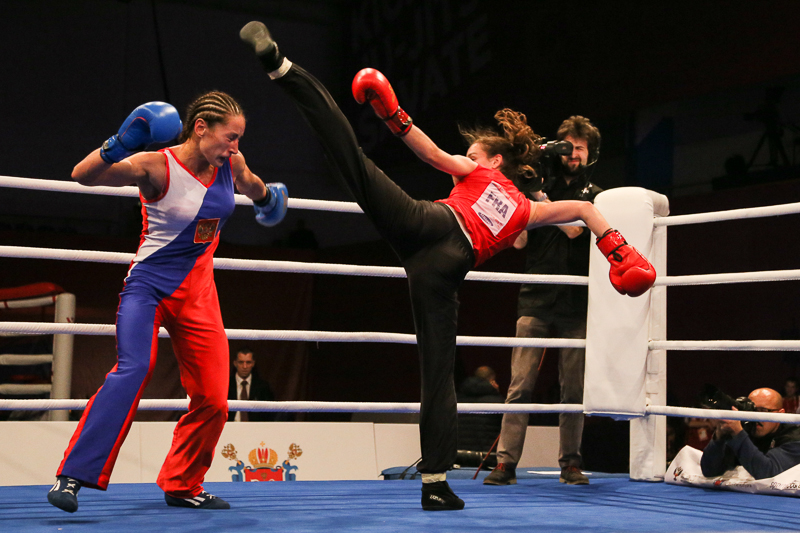 Mathilde Christel Mignier (FRA) vs Rimma Golubeva (RUS), Women’s Assaut -56kg Finals at the World Combat Games 2010. / Photo Source: World Combat Games
Mathilde Christel Mignier (FRA) vs Rimma Golubeva (RUS), Women’s Assaut -56kg Finals at the World Combat Games 2010. / Photo Source: World Combat Games
Summary
Savate is a form of Kickboxing developed and practiced in France. Like many other forms of martial arts, Savate uses both hands and feet for striking an opponent. Unlike other forms of combat, feet are the only part of the leg used to hit an opponent. Using knees and shins to strike, common with other forms of Kickboxing, is not permitted in Savate. Another distinguishing aspect about Savate is that the fighters must always wear shoes, regardless of fighting conditions.
History / Origins
ETYMOLOGY
The term “Savate” comes from a French word of the same name. The word Savate literally translates to “old shoe.” The style was given this name because the object of the match was to kick your opponent with regular shoes or boots. A similar style that would later be merged with Savate was Chausson, which means “slipper.” A male Savate fighter is called a savateur or tireur, while a female fighter is known as a savateuse or tireuse.
BEGINNINGS
The early history of Savate can be traced back to the late 1600s. Many forms of street fighting were taking place at that time. Eventually, these systems would be combined to form the style known as Savate. At the time there were two main styles of street fighting in France – la savate and le chausson. Chausson was developed by sailors who would use higher kicks than those found in early Savate. It was said they would keep one hand on the ship’s deck during combat to keep balance and prevent them from falling over when violent waves crashed the ship. Despite the few differences, the two styles were closely related. Eventually they would become one. What distinguished Savate from other styles was that there were no closed-fisted punches. All blows were delivered open-handed. This would later change when elements of English Boxing were introduced into the sport. Savate (or chausson) would reappear in the modern world. The first established Savate center for practicing the old form of street fighting was opened in 1825. Though they cleaned it up from its earlier grittiness (for example, they banned gouging and grappling
), the spirit of the style was preserved.
PRESENT DAY
In today’s world, Savate is practiced out of the streets and in organized federations. Several countries, including England, Australia and the United States, engage in organized Savate matches. The modern form of Savate is ranked as one of the safest sports to learn and to be practiced. Contemporary Savate has three types of combat – assault, pre-combat and combat. Assault focuses on each participant utilizing their maneuvers while making light contact. Fighters get penalized for using excessive force in assault. Pre-combat gives opponents the opportunity of full contact, provided that each of them wears protective headgear and pads. Combat is also full contact, but the only protective gear a fighter is permitted to wear is a cup and mouth guard. Like other forms of martial arts, Savate uses a ranking system. However, instead of colored belts, Savate uses colored gloves to show how much a fighter has progressed.
FOLKLORE
Since Savate is a relatively modern sport, not much folklore exists for it. There is however, a trace amount of hearsay in its early history. For instance, the high kicks used by sailors practicing chausson (savate) were said to have been learned from travels to the continent of Asia. There is also the widely-believed, yet undocumented, assertion that the same sailors focused on foot work and kept one hand on the deck to maintain balance in preparation for rocky ocean waves.

| COUNTRY OF ORIGIN: | France |
| TIME OF ORIGIN: | |
| PRACTISED: | |
| FOUNDERS: | |
| FOCUS: | Striking |
| ALSO KNOWN AS: | French Boxing, French Footfighting, French Kickboxing |
| PARENTHOOD: | – |
| DESCENDANTS: | – |
| OLYMPIC SPORT: | No |
NOTABLE FEMALE PRATITIONERS
Coming Soon!
NOTABLE MALE PRATITIONERS
Coming Soon!

| NATIONALITY: | |
| DATE OF BIRTH: | |
| AGE: | |
| BORN: | – |
| RESIDENCE: | - |
| ALSO KNOWN AS: | French Boxing, French Footfighting, French Kickboxing |
| OCCUPATION: | Striking |
| JOB TITLE: | – |
RELATED FEMALE INDIVIDUALS
Coming Soon!
RELATED MALE INDIVIDUALS
Coming Soon!

| COUNTRY: | France |
| LOCATION: | - |
| FOUNDED: | |
| OPERATIONAL: | |
| FOUNDERS: | |
| ALSO KNOWN AS: | French Boxing, French Footfighting, French Kickboxing |
| SECTOR: | Striking |
| DESCRIPTION: | – |
| WEBSITE: |
ACOSSIATED INDIVIDUALS
Coming Soon!
ACOSSIATED ATHLETES
Coming Soon!

Open Palm Gloves
Made from Nama Hide™ Leather, this semi contact open palm glove is designed for semi contact, full contact or bag work.
£24.99

Training Boxing Gloves
Multi-purpose glove used for boxing, kickboxing, semi/full contact or ring work. Superior comfort design for a snug, lightweight fit.
£22.99
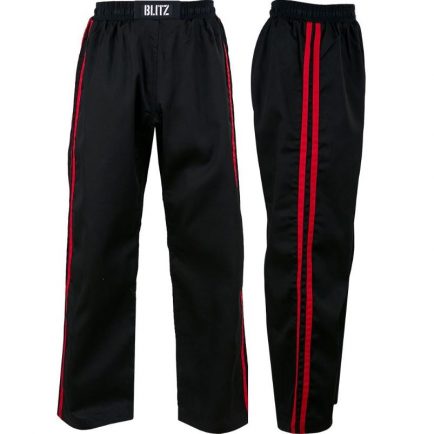
Full Contact Trousers
Suitable for all styles of Martial Arts. Incredibly comfortable during intense training sessions. Polycotton with reinforced stitching.
£12.99
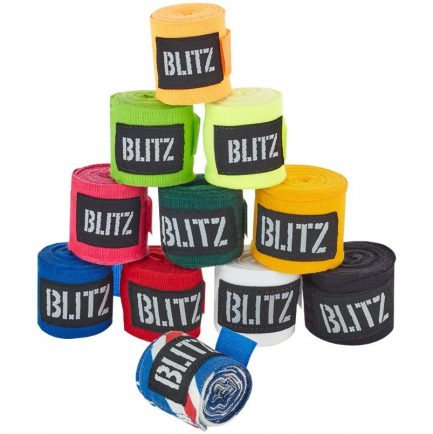
Blitz Hand Wraps
Extra durable hand wraps with Velcro straps and thumb hole to easily start wrapping. Excellent for use in protecting the hand.
From £3.99
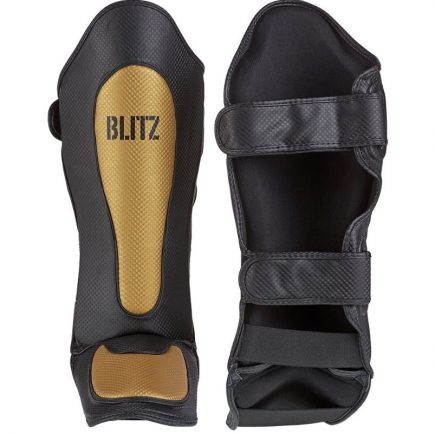
Centurion Shin Guards
For heavy sparring and training drills, the Blitz Centurion Shin Guards absorbs the hardest of blows giving high impact protection.
£45.99

Shin & Instep Pads
Padded elasticated slip on shin and instep pads. Ideal for all types of martial arts. Cushioned padded protective outer. Sold in pairs.
£9.99
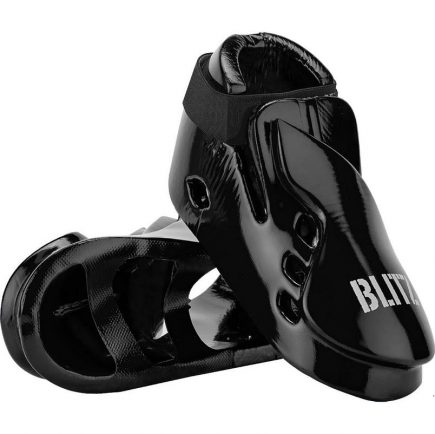
Dipped Foot Guards
Minimise the risk of injury and train in confidence with the incredibly lightweight Blitz Double Padded Dipped Foam Foot Guards.
£31.99
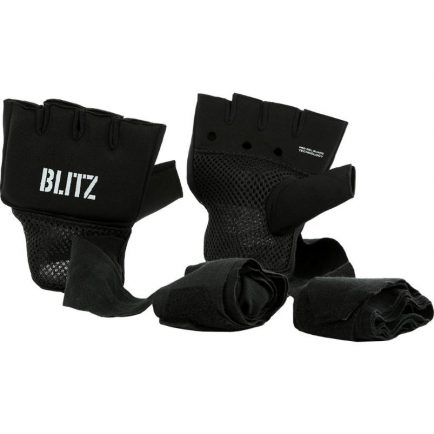
Pro Gel Hand Wraps
Engineered-woven gel padding on the exterior providing the required extra protection to the vulnerable areas of the hand.
£12.99

Diablo Fight Shorts
Designed with kickboxers in mind, Diablo Training Fight Shorts are ultra-lightweight to allow for a full range of movement.
£28.99

Kickboxing Drum Bag
Single zip barrel design with two carry handles and one adjustable shoulder strap that's easy to remove when not needed.
£22.99
Practices
PHILOSOPHY
Savate has a very tame and controlled nature to it. Although initially a form of street fighting, it has since shed much of the more violent aspects that were prominent in its origins. For instance, head butting and gouging are no longer permitted. Savate also has a Mixed Martial Arts aspect to it. Even though it had been practiced since the 1600s, it was only in the late nineteenth century that closed-fisted punching was allowed. This was after elements of British Boxing had been introduced. Before then, only open-handed strikes were allowed. Even with the closed punches, Savate remains one of the safest combat sports in the world. Savate is more focused on skill and technique than on being lethal.
TECHNIQUES
Information coming soon
TRAINING
Information coming soon
RANKS & GRADING
Information coming soon
WEIGHT CLASSES
Information coming soon
Rules / Rulesets
RULES / RULESETS
Being an extremely safe form of fighting, Savate has a few rules in place to create a low margin of serious injuries. The first of which is that shoes and gloves must be worn. There are certain punches and kicks that are not allowed. For instance, kicks using the shins or knees are forbidden. The kicks that are permitted are roundhouses, kicks from the side, hook kicks and low kicks. Matches can last either four or five rounds. The length of the round can be either 1½ minutes or a full 2 minutes. There is a 1 minute break between rounds.
Organisations & Historical Places
ORGANISATIONS
Information coming soon
HISTORICAL PLACES
Information coming soon
Popular Culture
POPULAR CULTURE
There are many references of Savate in popular culture. In the X-Men series, the character Gambit uses Savate as his designated style of fighting. Continuing with theme of comic book characters, Batroc the Leaper regularly used Savate techniques in his altercations with Captain America. Among other forms of martial arts, Batman is known to have learned and mastered Savate. Following in Batman’s footsteps, Dick Grayson, the first Robin, became proficient in Savate as well as other forms of fighting. In the realm of video games, Vega from Street Fighter uses Savate. He incorporates a Savate style with Ninjutsu and bullfighting.
Useful Links
USEFUL LINKS
Links coming soon
References
REFERENCES
- http://www.cama.org.uk/savate_net/index.php?option=com_content&view=article&id=3&Itemid=3
- http://www.blackbeltmag.com/daily/mixed-martial-arts-training/boxing/savate-from-the-back-alleys-of-france-to-the-martial-arts-world/
- http://www.fullcontactmartialarts.org/savate-french-boxing.html
COLLABORATORS
No Collaborators found





